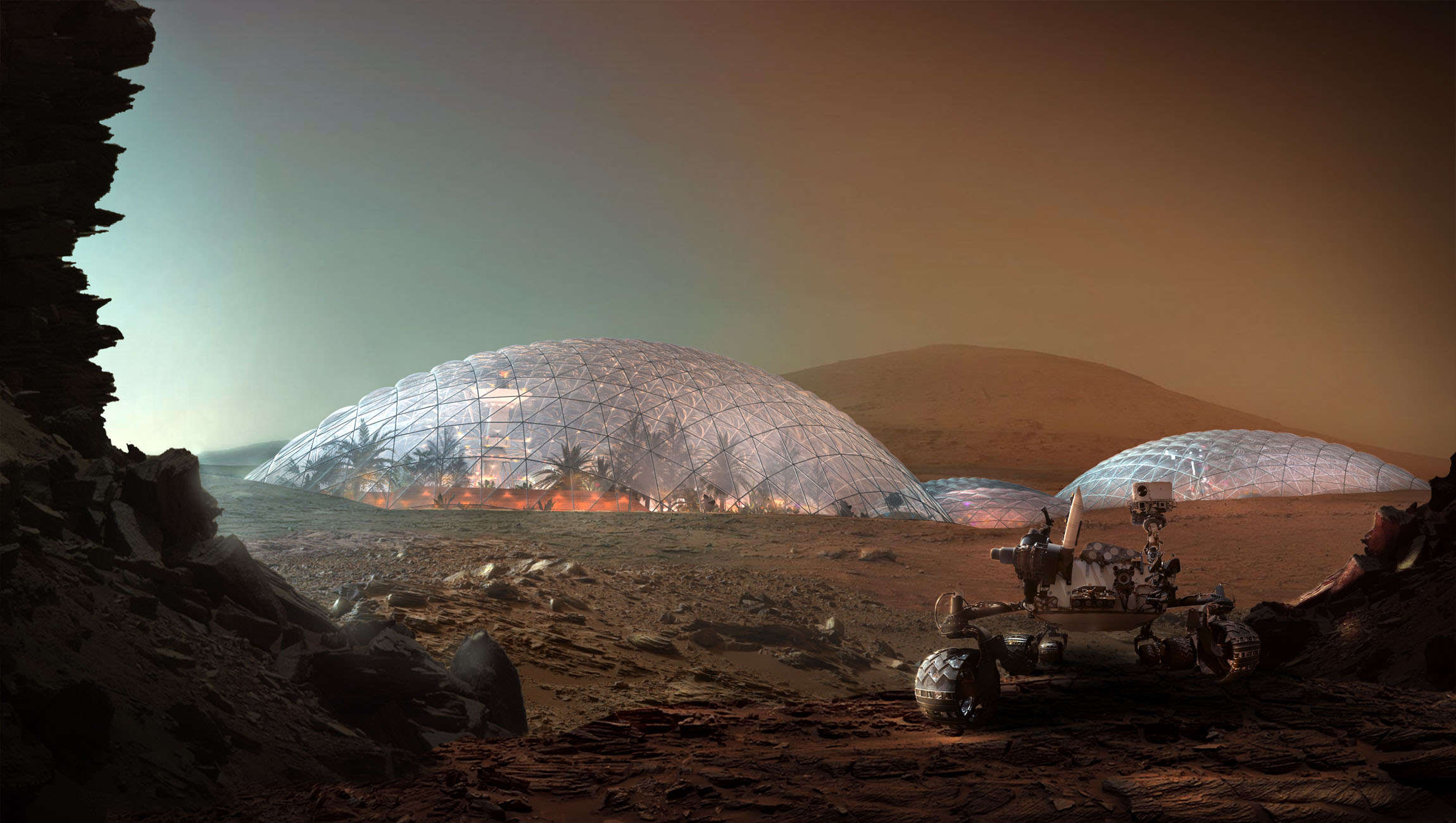Create a free profile to get unlimited access to exclusive videos, sweepstakes, and more!
The Martian city of the future is landing in Dubai, and it’s going to be an out-of-this-world experience

Unreal and beyond most of our trippiest dreams, the city of Dubai is a living, breathing sci-fi movie—firefighters in jetpacks, anyone? Now try adding an entire Martian city concept to that.
The United Arab Emirates is on the same wavelength as Elon Musk when it comes to colonizing Mars. They want an entire human population on the Red Planet within the next century. Architects from Bjarke Ingels Group were asked to design Mars Science City, a prototype for what is going to turn into a hyper-futuristic lab for the Mohammed Bin Rashid Space Center (MBRSC), which will keep developing space tech that will allow humans to stay alive on a frozen planet almost 80 million miles (40 on a good day) from Earth.
Mars Science City is estimated to cost at least $135 million and light up 176,000 meters of what isn’t going to be just desert sand for too much longer. The thing is, building a city on Mars means dealing with an inhospitable and literally unearthly environment. It’s more than an architectural challenge. From spider-esque structures to cities made entirely of fungus, there is no shortage of ideas when it comes to designing the ideal Martian habitat. The problem lies in how humans are going to survive.
The average temperature on Mars is -81 degrees Fahrenheit, so this is definitely not resort weather, despite conceptual images showing sunlight streaming in through palm branches in a translucent biodome (which would have the actual living structure 3D-printed beneath it with Martian soil). Temperatures inside these habitats would have to be adjusted to livable levels for humans and other life forms from Earth to survive. Incorporating an insulating material into these structures will trap heat from sunlight and prevent it from escaping too fast. Mars has such a thin atmosphere that heat transfer happens extremely slowly, so any heat that enters through the insulated walls of a biodome will hang around for a while.
Polyethelene is a surprisingly light plastic that is not just a great insulator but almost unbreakable. It explains why Bjarke Ingels will be using a clear polyethylene membrane that lets the sun in and traps solar heat. Water windows, which would consist of two clear layers filled with water and possibly an entire aquarium, are another way the design firm is thinking of letting light in while upping the unconventional air conditioning on Mars.
The biodomes would also have to be pressurized. Air pressure on Mars is only 6% of that in Earth’s atmosphere, and such dangerously low pressure could result in tissue swelling, circulation loss, and severe decompression sickness, otherwise known as the bends, which can be lethal. Aircraft are pressurized because of the risk you would otherwise be taking by being exposed to a low-pressure layer of the atmosphere way too fast after lifting off from a layer with high pressure.
Just a habitat isn’t enough to shield humans from harsh Martian weather. Oxygen has to be provided somehow, and since shipping heavy tanks over from Earth on a rocket isn’t exactly the best or most economical idea, electrolysis will be used on the Red Planet’s water ice to separate oxygen from hydrogen in the H2O molecules. Not that the hydrogen will go to waste. It can double as rocket fuel.
While the Earth version won’t need pressurization or electrolysis, and the habitats will be 3D-printed out of desert sand before biodomes are built over them, Mars Science City still sounds less like a prototype city for space dwellers than a cinematic dream brought to life. It could still end up starring in some infinitely awesome science fiction movie.




























